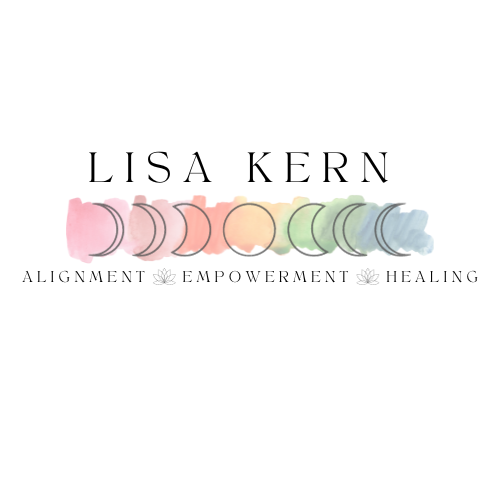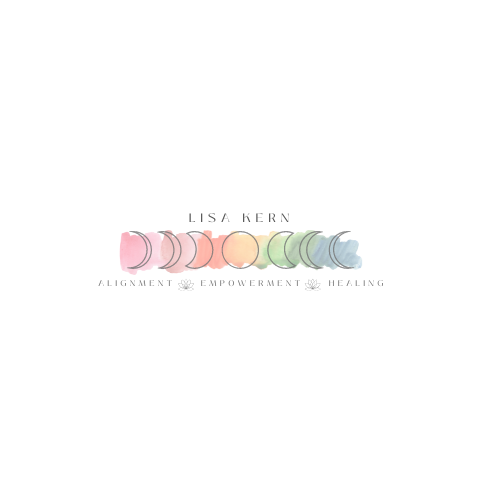8 Ways to Improve Your Health by Reducing Toxic Exposure
With the new year upon us and everyone setting their resolutions, I have been reflecting on what is really important to me and what I’m looking forward to improving in 2020. The things that topped the list were cleaning up my eating, reducing toxic exposure for myself and family, and spending quality time with those I love.
When I’m passionate about something I tend to go all in and obsess about it for awhile, so since I put in the time and did some research on the topic, I thought I’d share the top ways to reduce toxins in your home environment so you can start 2020 out as healthy and happy as possible with me!
This past year I have experienced many people close to me become sick with no explanation. My cousin who never smoked, passed away from lung cancer. A childhood friend only in his 30’s was diagnosed with metastatic breast cancer. Numerous other friends and patients are suffering from Crohn's disease, fibromyalgia, chronic pain, and my own son is living with epilepsy.
WHY?
Why all this unexplained pain and suffering when it’s not ‘genetic’? It really got me thinking about what we are exposed to on a daily basis, and if there is anything we can do to minimize our risk for disease. In the last 50 years there has been a dramatic increase in chemical productions in the United States.
Is it a coincidence that there has also been a dramatic increase in conditions like ADHD, autism, diabetes, obesity and all types of cancers?
Now, of course this is my quick interpretation of many articles and I have summarized based on my own understanding. I am not claiming to understand how bisphenol A (BPA) harms the endocrine system or how poisons that I can’t pronounce will cause pain and inflammation, but I do think it’s important to note that BPA, the harmful chemical that hardens plastic, was outlawed in 2012, however it was replaced with chemicals that may be just as harmful. Of the thousands of chemicals registered within the Environmental Protection Agency (EPA), only a handful are regulated. A handful!
These are chemicals that we clean our homes with, rub into our bodies that our skin soaks up, breathe in constantly and eat daily. Please use this article as a quick reference to notice where sneaky toxins might be hiding and consider making changes that will impact your body and keep you as healthy as possible.
For the purpose of this article, I’m just looking at toxins within the home. The average house today contains about 62 toxic chemicals.
These chemicals are found in everyday products like non-stick pans, fast food wrappers and personal care products.
You know I’m a huge fan of realistic, small changes - so read on to see how you can identify and reduce exposure to things that may be making you sick.
8 Ways to Reduce Toxins in Your Home:
1. Mix your own cleaning supplies
Mixing your own cleaning supplies is super easy, fun, and one of the best things you can do immediately to get dangerous chemicals out of the house and away from your family and pets. Many household cleaning products are incredibly toxic. Labels right on the products will often say “hazardous to humans and domestic animals”. I never even thought to read ingredients before, I just trusted that if it was sold in the store then it was safe - cleaning away my babies high chairs and the surfaces we ate off of!
Consider the cheap and easy alternative of making your own cleaning supplies at home. Use things like vinegar, baking soda and essential oils. Check out more here for ingredients and ratios to make whip up your own batch. https://thegreenparent.co.uk/articles/read/make-your-own-cleaning-products
2. Buy used or Organic Clothes
You know that ‘new clothes’ smell? Yeah that could be formaldehyde, a colorless gas that's frequently associated with embalming. Also be wary of clothes that are marked “waterproof”, “stain resistant” or “wrinkle free” because they also have chemicals that have been linked to adverse health effects.
Be sure to wash new clothes before wearing or even better, consider buying used or organic clothing. Try sites like Thredup or swap.com which are affordable online consignment shops, as an alternative to always buying new. Added bonus, you're helping the environment!
3. Go Plastic Free
I spoke a little about BPA earlier but even though it was outlawed, other harmful chemicals are lurking in plastic bottles. BPA has been linked to everything from breast and other cancers to reproductive problems, obesity, early puberty and heart disease, and according to government tests, 93 percent of Americans have BPA in their bodies!
Easy, realistic swaps to lessen your plastic exposure and help the environment could be:
Carry re-usable grocery bags
Switch to a glass water bottle (my favorite)
Use re-usable metal straws
Ditch the plastic, re-usable food containers (and don’t reheat food in them)
Other Resources if you're not convinced
Look here for 100 Steps to a Plastic - Free Life
https://www.earthday.org/fact-sheet-the-plastic-threat-to-human-health/.
4. Stop using non-stick cookware
Non stick cookware contains PFA’s which were banned by the FDA but still exists in food packaging and cookware as a means of repelling water and oil. However, we then take contaminated food and cook it on a contaminated surface.
Hmmmm.. Sounds like a double whammy of toxic dinner delight. (I’ll talk food toxins in another blog). So what can we do? To reduce exposure of harmful chemicals when cooking, look to use cast iron, ceramic, or stainless steel cookware. Here’s a great resource for other Safer Cookware Options.
5. Stop eating canned food
Try eating fresh or frozen fruits and vegetables instead. This limits your exposure to BPA and harmful chemicals found in the labels. This topic seems to be up for debate, however studies show that the BPA in canned food can migrate from the can's lining into the food it contains. One study analyzed 78 canned foods and found BPA in over 90% of them. Usually, chemicals are added to extend the shelf life of canned foods. Another benefit to eating fresh foods - they are full of flavor and taste because they maintain all of the natural vitamins and minerals.
6. Investigate food allergies and intolerances
There is a difference between food allergies and food intolerances. Most people understand a food allergy and know when it’s harmful as the body rejects it and causes symptoms like hives, rash, vomiting or closing throat. An allergy occurs when your body's immune system reacts to eating a particular food. An intolerance to food may not manifest quite as obvious but can be harmful over time. A food intolerance occurs when the body has a chemical reaction to eating a particular food. Symptoms of intolerance can include nervousness, GI disturbance, sweating, tremors, headaches and changes in breathing patterns.
Common causes of food intolerance's are:
dairy products, including milk, cheese and yogurt
chocolate
eggs, particularly egg white
flavor enhancers such as MSG (monosodium glutamate)
food additives
strawberries, citrus fruits and tomatoes
wine, particularly red wine
histamine and other amines in some foods.
If you suspect that your body is not functioning 100% and you may have some food intolerances, consider seeing a Naturopathic doctor who can do specific food testing. There are also some you can buy online and do at home, such as EverlyWell or 55 Strands.
7. Filter your Water
I’m guilty of drinking tap water because I feel lucky enough to live in an area that has access to reservoir water and it tastes clean and refreshing right out of the kitchen sink. I was horrified to read that my state was on the list of highest detected PFAS’s (those dangerous chemicals that can cause a host of health problems that range from higher cholesterol levels to compromised immune systems and hormonal disruptions).
Researchers have analyzed levels of industrial chemicals in over 36,000 water samples from all over the US, and have found that 6 million people are being exposed to unsafe levels in their drinking water. Drinking water from 13 states made up 75 percent of the PFASs detected -- Alabama, Arizona, California, Florida, Georgia, Illinois, Massachusetts, Minnesota, New Jersey, New York, North Carolina, Ohio, and Pennsylvania.
Other toxins that may be hiding in your water supply may be chlorine, fluorine compounds, Trihalomethanes (THMs), assorted hormones, pesticides and even trace amounts of prescription drugs and lead. We certainly can’t forget about the Flint Water Crisis in 2014. Well there goes my argument for drinking more water every day! But the truth is, water is essential and we need it to survive. So if we shouldn’t drink tap water and it’s not safe to drink bottled water, what the heck should we do?
Consider buying a water filtration system like The Big Berkey or go smaller scale with something you can attach to your kitchen faucet like this, or keep it super simple and stick with the old faithful, Brita.
For something that we consume so regularly, it’s worth looking into for you and your family. Again, small changes can reduce thousands of harmful chemicals that we filter into our bodies.
8. Remove your shoes when you walk in the door
OK. This makes me majorly cringe writing this because this is something I’m not great at. Even worse to admit, I’ve worked in hospitals for over a decade and did not strongly enforce this. Even when my babies were little. I’m pretty sure they always put their shoes in their mouth. And less than a week ago, I scolded my oldest for his shoes being on the dining room table. WTF? I’m apologizing to my past self and moving on!
A University of Arizona study found, on average, 421,000 different bacteria on shoes. Some of that was feces. E. coli was detected on 27% of the shoes, along with seven other kinds of bacteria, including Klebsiella pneumonia, which can cause urinary tract infection, and Serratia ficaria, which can cause respiratory infections and also meningitis. Ok, I hope you are convinced already, but since we were talking about toxins in this article, an EPA study showed that the herbicide 2,4-D (commonly sprayed on people’s lawns) could be easily imported inside via your kicks for up to a week after exposure which can cause issues like GI upset, rashes and breathing problems.
Recap, remove those germ infested transporters at the door!
Thanks for reading! Of course there are many more ways to reduce toxins in your life, but these were my easy 8 that you can think about and start ASAP. Also, whenever possible, eat organic food to reduce your exposure to pesticides. If you can’t buy organic produce, choose the fruits and vegetables with the least pesticide residue and avoid the most contaminated ones.







